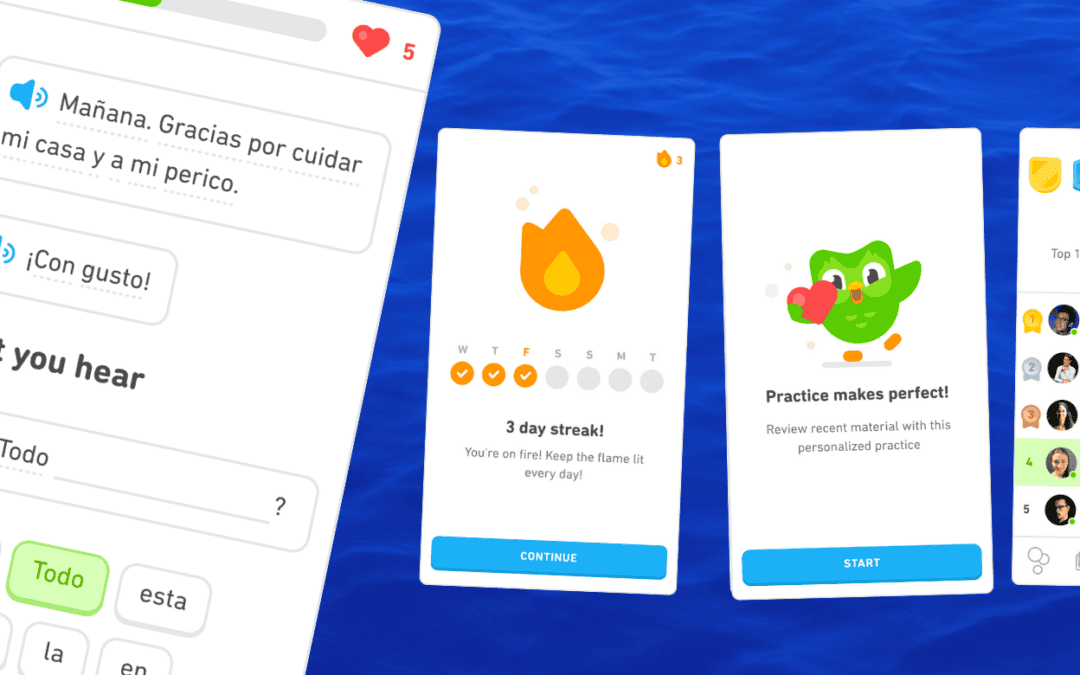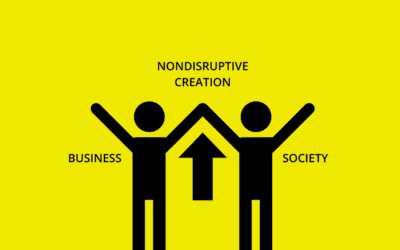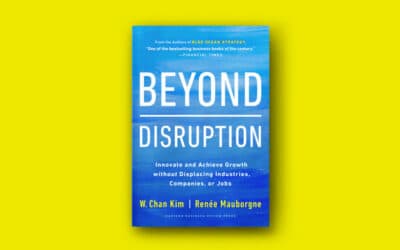Corporate learning and development strategy will largely determine the future growth of your company. People are the key asset of your business. No matter what industry you’re in, the mindset, knowledge, and skills of your workforce are critical to your organization’s success in the long run.
But to be effective, your corporate learning and development (L&D) strategy needs to be closely aligned with the business goals of your organization. You need to make a business case for L&D in your company. In this article, we’ll focus on how to strategically approach setting your corporate learning and development programs and how to make a business case for it.
What is corporate learning and development?
In a nutshell, corporate learning and development is a company strategy to achieve its business objectives through training, upskilling, and providing its employees with the right tools to achieve the set goals.
For the learning and development strategy to be effective, first and foremost it needs to be connected and aligned with the overall business priorities and build employees’ capabilities to advance that strategy. Misalignment of objectives will derail any progress and render the L&D strategy obsolete.
Set a learning and development philosophy in your organization
Before you start creating your L&D strategy, focus on the big picture and identify the overall learning and development philosophy for your company.
Anyone would agree that, at the highest level, a learning and development strategy should provide exceptional value at a low cost. In blue ocean terms, we call it value innovation. Value innovation is the strategic logic underpinning blue ocean strategy. It’s the simultaneous pursuit of differentiation and low cost. Value innovation focuses on making the competition irrelevant by creating a leap in value for buyers and for the company, thereby opening up new and uncontested market space.
In the context of the learning and development strategy for your organization, you can think of value innovation as providing unprecedented L&D value to your employees at a low cost to your company. If you center your organization’s learning and development philosophy around value innovation, you’ll set your company apart in the marketplace, benefiting your employees and your company.
We’ll focus next on how you can create value innovation for learning and development in your organization by introducing you to a simple L&D framework using blue ocean strategy tools.
How to create a powerful learning and development strategy in your organization
Chances are your current learning and development strategy is, at worst, obsolete or, at best, misaligned with the current post-pandemic reality your business is in.
Learning and development strategy needs to closely align with your organization’s business goals. The same old programs you run every year just won’t cut it. It’s time to rethink your L&D strategy and set your organization on the path to profitable growth. Here are three steps your organization can take right now.

Eliminate learning and development programs that don’t align with your business goals.
1. Assess your organization’s goals and priorities
To succeed as a learning and development leader, you first need to know what your organization’s business priorities are. To design a powerful learning and development strategy for your company (your ‘to-be’ L&D strategy), you need to first understand what’s important for your company and assess how your current learning and development training programs fit to support those goals (your ‘as-is’ L&D strategy).
Are your company goals to increase the bottom line, talent recruitment and employee retention, or develop new innovative offerings that would set your company apart from the competition?
To know for sure, get yourself into meetings that count. Develop strong relationships at the top. You need to hear what the leaders of your company are concerned about and what business goals they are prioritizing. Only then will you be able to assess whether your current programs support those goals and where they fall short.
2. Engage key stakeholders
You need to be able to explain to each stakeholder group the benefits of L&D programs based on the overall company business goals. These will include:
– The executive team. You need to secure buy-in on the top. The executive team needs to see the impact of L&D programs on the bottom line and how they help with talent acquisition and retention.
– Department heads. Learn which areas they need support in when it comes to skill development. They will be able to translate the overall organization objectives into specific skills for specific roles.
– Employees. They want to help the business but also help themselves. You need to design programs that advance them in their professional career while having the big picture in mind. that give them credentials to boost their resume will be always well received.
3. Select the programs that offer high value at low cost.
It’s easier to convince stakeholders to sign off on your learning and development strategy if you can clearly demonstrate how each program offers unprecedented value compared to its cost. Go for maximum impact. Select the most impactful programs that support your learning and development strategy. Read on for more ideas.
A learning and development strategy framework
Blue ocean strategy is a business strategy helping companies create profitable growth while standing apart from the competition. Its tools and frameworks can be easily applied to multiple scenarios, including setting a corporate learning and development strategy.
Let’s see how one of the tools, the Eliminate-Reduce-Raise-Create Grid, can be used as a learning and development strategy framework to help you pursue value innovation in your organization.
The ERRC Grid is an analytical tool developed by professors of strategy and world-renowned management thinkers, Chan Kim and Renée Mauborgne in their global bestsellers Blue Ocean Strategy and Blue Ocean Shift. The ERRC Grid focuses you simultaneously on what factors to eliminate and reduce to lower your cost and what factors to raise and create to offer exceptional value.
Let’s now look at how this visual tool can be applied to develop the learning and development strategy at your company.
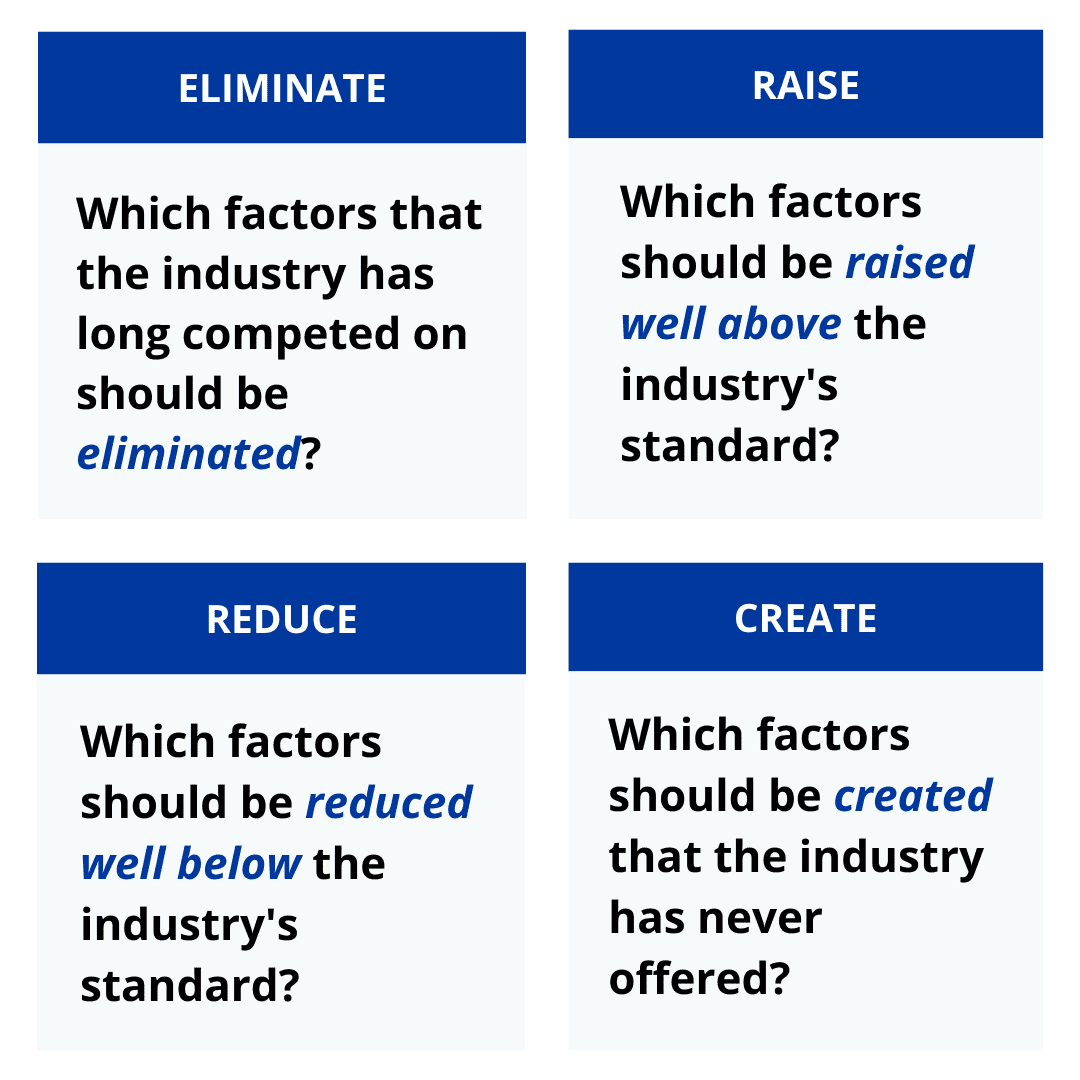
The ERRC GRID. © Chan Kim &Renée Mauborgne. All rights reserved. Use the ERRC Grid to develop your corporate learning and development strategy
Make a business case for learning and development
Eliminate L&D programs that can’t be measured or are not adding to business performance
Every organization has programs that might have been effective and affordable in the past but that likely have a negligible impact on business performance. This is especially true of the post-pandemic reality, which has forced many organizations to tighten their belts.
Unfortunately for employees and businesses themselves, learning and development programs are sometimes the victim of this misguided strategy. Misguided because senior executives should see learning and development strategy as part of the overall business success, not as an add-on.
Select the most impactful programs that support your learning and development strategy.
Many L&D managers are not helping their case by selecting programs that are nice to have but not necessary in the eyes of the management or whose impact can’t be measured. The best thing you can do is eliminate the programs that are not adding to the bottom line of your organization. Check if any of your current programs are misaligned with the current business priorities and if so, eliminate them.
It’s true that some programs are very difficult to objectively measure in terms of impact and they frequently rely only on post-completion satisfaction surveys or completion scores. Before eliminating these programs from your list of resources, ask yourself the following three questions:
1. Does this program effectively contribute and support the organization’s current priorities?
2. Does it strengthen your organization’s capability. For example, does it increase its workforce’s strategic thinking capability?
3. Does it directly help employees achieve maximum impact in their role?
Selecting programs that have a direct and positive impact on employee performance, engagement, or business objectives is far more important to the growth of your company than having employees ‘like’ the program.
Remember, achieving value innovation is just as much about eliminating and reducing factors as it is about raising and creating them. Few learning and development departments have unlimited budgets. Most are constrained and therefore selecting the most impactful L&D program should be a priority. It is better to have fewer high-impact programs on the menu than a plethora of training programs that don’t move the needle.
Eliminate hierarchical obstacles to advancing ideas within your organization
Does your organization frequently shut down or discourage innovative ideas because of bureaucracy or old ways of thinking? What if you could introduce a program that would not only help generate innovative ideas for your organization but also build the collective buy-in of people from all levels and functions of the organization from the beginning?
Many companies come to us for blue ocean solutions to this exact problem. They want to establish a culture of innovation, agility, and the ability to quickly respond to changing market dynamics, but they struggle to align people behind their strategy.
While our flagship online course, the Blue Ocean Sprint, is designed as a self-study, self-directed online course, many companies are taking it as a team. They go through individual modules individually but then they gather as a group to discuss their insights.
The course is built in such a way that it forces people to think through their company’s scenario and actively collaborate with their team to progressively arrive at blue ocean insights. The course helps to objectively select the most impactful idea for the organization while at the same time engaging people of different functions and levels within the organization to effectively collaborate and arrive at a consensus. This assures success in the long term because execution is already built into strategy formulation. You are building L&D strategy alignment into the company’s business strategy as your team will naturally select the high-value low-cost initiatives as they progress through the course.
Having a creative, innovative, and engaged workforce is critical to the success of any organization, and learning and development strategies need to support that objective.
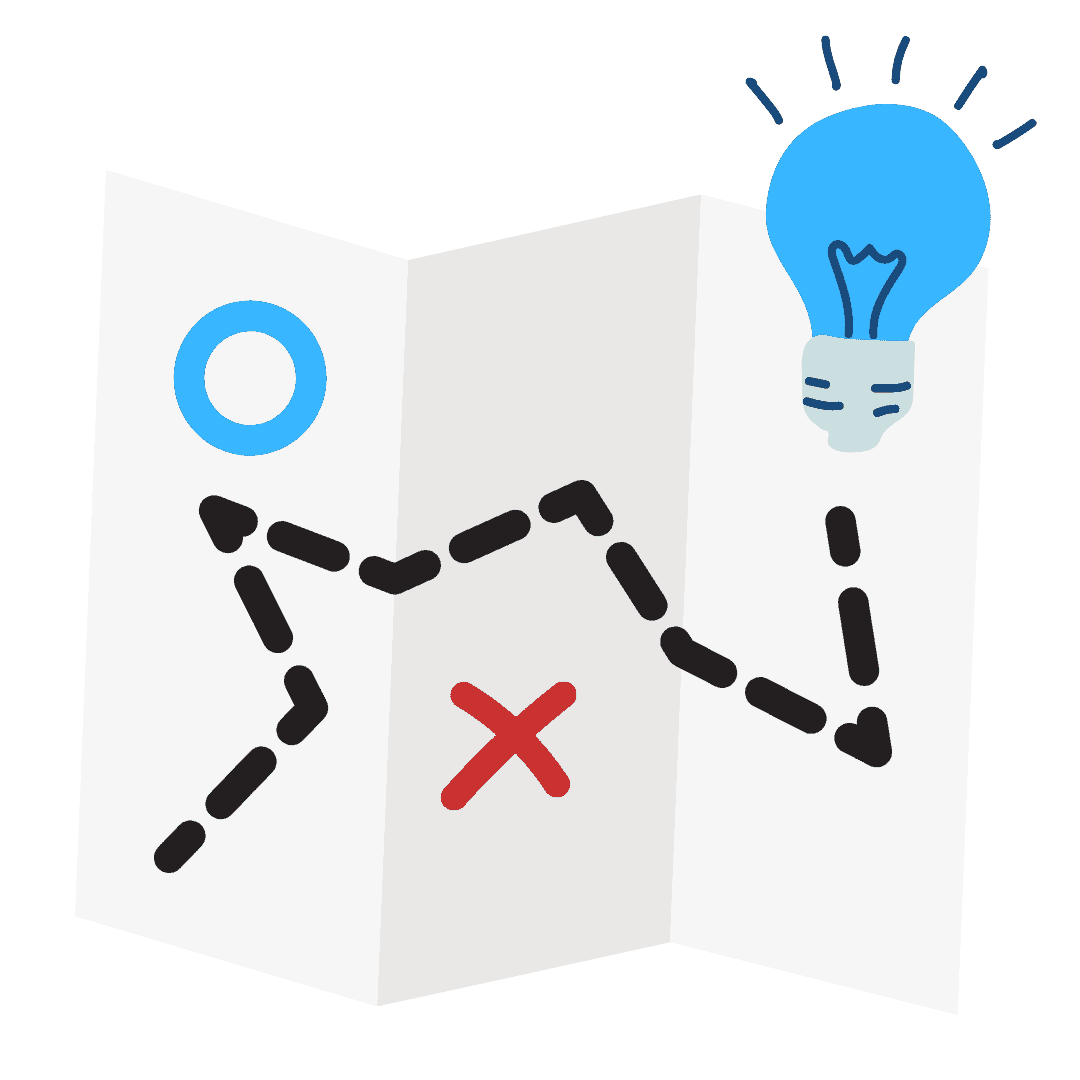
Use the Blue Ocean Online Course as part of your corporate learning & development strategy. The course helps to objectively select the most impactful idea for the organization.
Reduce resources spent on programs that don’t add to the company’s bottom line
Review your L&D programs and rank them according to the value they provide versus their cost, whether in terms of the time needed to complete them or the money spent on acquiring them. This simple exercise will force you to evaluate your existing programs and reduce the number that cost too much in relation to the value they provide.
If you want to go further, rank them again in terms of their usefulness to the future needs of the organization. Again, you’ll see potential candidates for elimination. By saving on resources that don’t provide tremendous value to your organization, you’ll be able to spend on programs that do.
Reduce staff turnover and increase employee retention rate
Long gone are days when employees were beating down the doors of companies hoping to get hired. These days, skilled and talented people have many options to choose from and high expectations for personal and professional growth within a company. Employee recruitment and retention are critical for company success. Learning and development strategy should be a critical part of an overall value proposition to employees.
To stay ahead of the game and retain talent, you need to offer innovative programs that add real value to people’s lives.
Every year Gallup surveys executives and employees around the world and summarizes their findings in their State of the Global Workplace report. Their latest report finds that 80% of employees worldwide are disengaged. Based on this statistic, it’s very likely that many on your team are disengaged as well.
What are the consequences?
Disengaged employees are counterproductive, negatively influencing coworkers, missing days at work and driving customers away through poor service. But more importantly, disengaged employees cost your business.
To retain the best talent, your workplace needs to offer interesting and innovative programs that actively engage them and help them grow in their role and make them feel they are contributing. In other words, your L&D strategy needs to help them develop on their leadership journey. To stay ahead of the game and retain talent, you need to offer innovative programs that add real value to people’s lives. While L&D program selection in itself is unlikely to persuade employees to stay in a company they’re unhappy in, if you design programs that advance and actively engage them in their work, you’ll see results.
Raise the role of learning and development in overall business strategy
One of the best ways to raise your profile in an organization is to help your function or department be more influential. The only way to do that is by showing the direct impact of your learning and development strategy on business results. Are your selected programs matching the business priorities of the company? Better yet, are you able to prepare your workforce for the changes coming in 2-5 years with innovative programs that prepare your team for the disruptive changes of tomorrow? The learning and development strategy developed by your department needs to anticipate and lead innovation by developing the employees’ skills needed to achieve the current and future organization’s business strategy.
A safe bet is to invest in programs that will help your employees quickly respond to changes. The skills that will always be relevant, in high demand, and are currently on the rise are creativity, innovative thinking, and the ability to solve complex problems through out-of-the-box thinking.
Raise collaboration among teams
Given that the number of hybrid workers is on the rise, your L&D strategy needs to address one key aspect of business performance which is collaboration among teams. When everyone was in the office, it might have been easier to get a group together, but this becomes a challenge, especially with many remote workers, sometimes in different time zones.
Learning and development strategy needs to take collaboration into consideration when selecting the right programs. Encouraging collaborative learning should be one of the criteria when evaluating programs to fit corporate learning and development strategy.
Create alignment with business strategy
The fundamental and arguably most important factor in creating a successful learning and development strategy is its alignment with the company’s overall business goals. The programs, courses, and training you select as part of the overall L&D strategy need to contribute and build capabilities across the company to achieve the set business goals.
If, for example, your company goals are to increase revenue, generate new demand, and create a culture of innovation, then your learning and development strategy needs to reflect that. You need to select the right resources tailored to help your team think strategically in new innovative ways, think outside the box, and create new market space for your product or service, especially if you’re facing limited resources and cutthroat competition.
Learning and development strategy needs to take collaboration.
While most companies understand the importance of aligning training with business strategy, very few can honestly say that all their learning and development programs have a direct connection with the strategic objectives of the company. Ask yourself, is your L&D strategy currently aligned with your organization’s overall priorities. If not, what needs to change? Are your programs addressing the needs of tomorrow or are they still grounded in the past?
Read more about strategic alignment and what it means for successful business strategy in our blog.
Create flexible learning journeys
The pandemic has changed the workplace forever and many companies are struggling to adjust to the post-pandemic reality. Many workers are now expecting a more flexible approach to how they work and this also translates into their expectations of corporate learning and development programs.
The new hybrid workplace, where many workers opt to work from home and spend only limited time in the office, is forcing corporate learning and development strategies to provide more flexibility and autonomy in how employees learn and develop new skills. Most corporate L&D programs offer a blend of online learning and offline sessions. The post-pandemic reality will see a shift toward more online, self-paced, self-directed learning. Your L&D strategy should reflect this trend.
While in-person programs have their merit, you should carefully select only the ones that offer high value at low cost (think value innovation). Think how you can upskill your workforce en masse, at low cost. If collaboration and exchange of ideas is one of the premises behind offline group sessions, see if any of the online interactive collaboration platforms relevant to your industry offer this in lieu of the in-person meetings.
You will also be faced with the challenge of coordinating the learning session among remote workers and those in the office. Your objective when formulating your organization’s learning and development strategy should focus on meeting the needs and preferences of your team as a whole and matching them with overall business goals. One way of doing this is through online self-paced, self-directed, interactive training.
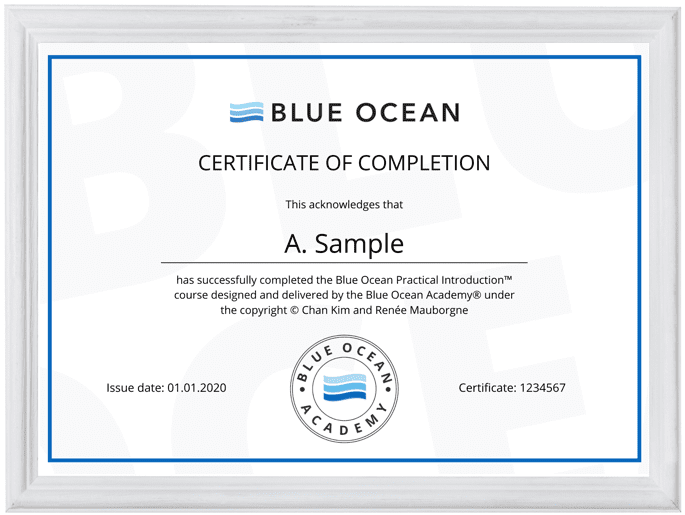
Get your team on the same page with the certificated Blue Ocean Online Course.
Why is learning and development important? – the rise of L&D
The benefits of a well-designed learning and development strategy for your organization include:
– direct impact on the bottom line through programs that enable employees to make a high-impact contribution
– raised employee engagement and talent retention
– talent development that prepares your company for the future changes
– breaking down the silos within the organization by including programs that emphasize cross-department or cross-function collaboration and knowledge sharing.
Value-Innovate Your Corporate L&D Strategy with the Blue Ocean Sprint Online Course
Blue ocean strategy is a proven methodology used by countless organizations around the globe to create growth, foster innovation, and engage talent. Renowned professors of Strategy at the INSEAD business school, Chan Kim and Renee Mauborgne, have created an online course based on their bestselling book Blue Ocean Strategy, to help corporations innovate and grow through their powerful tools and methodology.
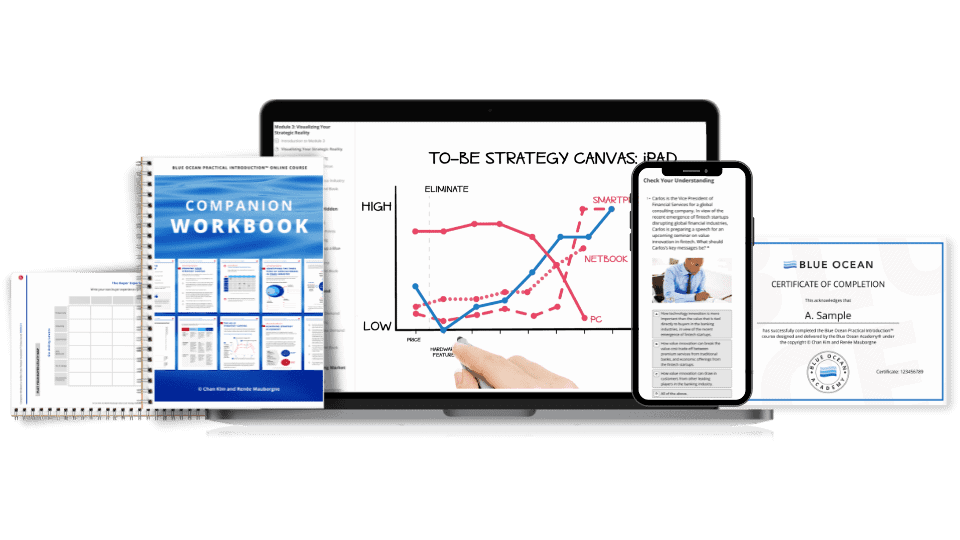
How your L&D strategy benefits from the Blue Ocean Strategy online course:
It directly impacts your people’s performance in any role as it strengthens their strategic thinking and innovation capability, and provides them with a toolbox they can apply in any scenario immediately.
It raises opportunities for employees to advance their ideas in your organization through a merit-based, best-idea-wins method, objectively selected on the grounds of value innovation.
It provides a flexible learning journey for an in-house, remote and hybrid workforce through an engaging, interactive, on-demand program that comes with a certificate.
It fosters a new mindset to help your team see opportunities where it previously saw only constraints.
The course offers world-class, high-value and low-cost training for your team on a proven methodology. In 2022, Harvard Business Review selected Blue Ocean Strategy as one of the most influential and innovative articles published in Harvard Business Review over the last 100 years.
Create a winning learning and development strategy that is high value at low cost and benefits both your employees and your company. Let blue ocean strategy help you.




